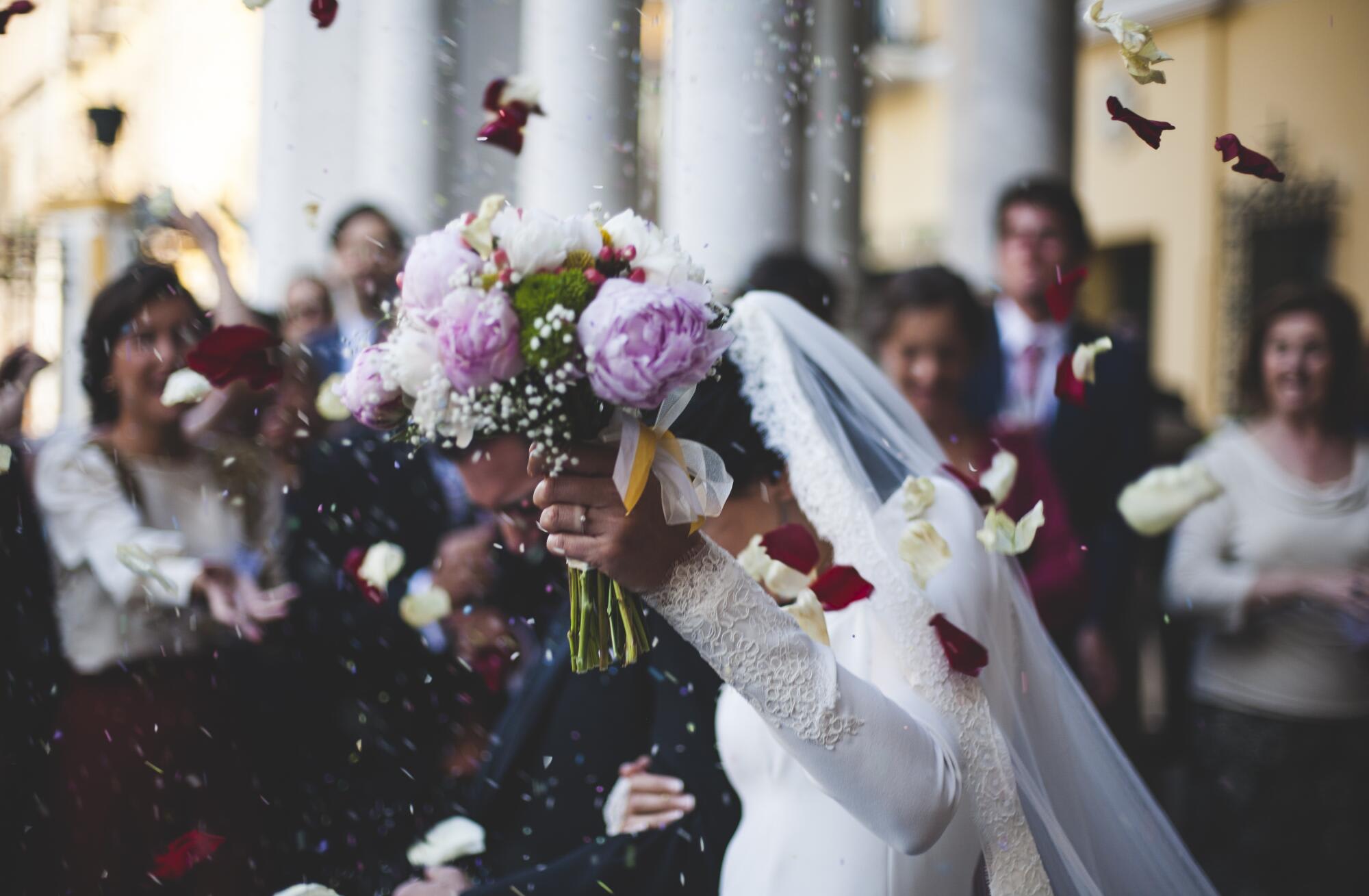Wedding Event Planning: Choosing Wedding Flower Arrangements

Imagine walking into a beautifully decorated wedding venue, where every corner bursts with vibrant floral arrangements that perfectly capture the essence of the couple's love story.
From cascading roses lining the aisle to delicate centerpieces glowing under soft candlelight, the flowers don't just decorate the space - they set the mood, tell a story, and leave a lasting impression. As an event planner, creating this magic is your craft. But with countless flower options, styles, and themes to consider, where do you start?
We can help. Let's go through how to choose flower arrangements when you're wedding event planning.
Understand the Couple's Vision
Every couple has unique preferences, styles, and sentimental elements they want reflected in their celebration. Event planners must begin by having an in-depth conversation with the couple to learn about their personalities, tastes, and expectations for the wedding theme.
Start by exploring the overall aesthetic the couple envisions. Flowers should complement the chosen style, from simple greenery for a minimalist look to luxurious roses and orchids for a grand affair.
Discuss the wedding's color palette, as the flowers will play a crucial role in tying the design elements together. Encourage the couple to share inspiration from photos, mood boards, or previous events they've admired to refine their preferences further. You can also give them bridal bouquet ideas based on the latest trends.
Set the Budget For Floral Wedding Decor
Flowers can account for a significant portion of the overall wedding budget, so it's essential to allocate funds strategically to prioritize the most impactful elements.
Provide the couple with cost estimates for various flower options, including premium and seasonal wedding flowers. Encourage them to focus on flowers that are in season, as these are more readily available and cost-effective.
For couples with a tight budget, suggest incorporating greenery. It's typically less expensive but can add volume and texture to arrangements. Mixing high-end flowers with budget-friendly options can create a luxurious look without exceeding financial limits.
It's also important to discuss any additional costs, such as delivery fees, setup charges, or rentals for vases and stands. Ensure the couple is aware of these expenses upfront to avoid surprises later. Work closely with the florist to create a detailed plan and quote that aligns with the couple's priorities and budget.
Know the Venue
Understanding the wedding venue is a critical factor in choosing the perfect floral arrangements. Each venue has its own unique architecture, layout, and ambiance, which directly influences the types of flowers and designs that will work best. Event planners should familiarize themselves with the space to ensure the floral décor enhances its features and creates a cohesive aesthetic.
Assess the venue's overall style. A grand ballroom may call for opulent arrangements with cascading blooms, while a rustic barn might suit simpler, earthy designs featuring wildflowers and greenery.
For outdoor venues like gardens or beaches, choose flowers that can withstand varying weather conditions, such as heat, humidity, or wind. Durable blooms like:
- Sunflowers
- Roses
- Baby's breath
- Chrysanthemums
- Lilies
are often ideal for outdoor settings.
Choose the Right Florist
A skilled and experienced florist can bring the couple's floral vision to life, ensuring the arrangements reflect their personality, theme, and preferences. Event planners play a crucial role in guiding couples through this process to find a professional who aligns with their style, budget, and logistical needs.
Research florists with a strong reputation in the wedding industry. Look for those with extensive experience, positive reviews, and a portfolio that resonates with the couple's desired aesthetic. Many florists specialize in specific styles, like:
- Modern
- Rustic
- Opulent
It's essential to choose one whose expertise matches the wedding's theme. Recommendations from trusted vendors or venues can also help narrow down the options.
Coordinate Across Elements
Flowers play a unifying role in tying together the ceremony, reception, and personal details, creating a seamless and visually stunning experience. Event planners must ensure that the floral décor harmonizes with other design components, such as attire, linens, lighting, and stationery.
Align the floral arrangements with the wedding party's attire. The bridal bouquet should stand out as the centerpiece of the floral design, complementing the bride's gown and reflecting the wedding theme. Bridesmaid bouquets, boutonnieres, and corsages should coordinate with the couple's attire and add a subtle touch of the chosen color palette. For a cohesive look, ensure that these personal florals echo the same flowers and tones used in larger arrangements.
You can use a wedding coordinator checklist to ensure you're not missing anything.
Explore Trending Designs For Bridal Bouquet Ideas
At the ceremony, floral elements should enhance key focal points:
- Altar
- A chuppah
- Arch
- Backdrop
These arrangements should align with the overall theme while drawing attention to the couple's exchange of vows. Consider continuity by incorporating similar flowers along the aisle, in pew markers, or around the entrance to create a welcoming and harmonious flow.
The reception provides an opportunity to reinforce the wedding's floral design. Centerpieces should complement the tablescape, including linens, tableware, and any additional décor like candles or place cards.
Low-profile centerpieces work well for intimate conversations, while taller arrangements can create a dramatic effect in larger venues. Flowers can be used to elevate spaces like the cake table, sweetheart table, or dance floor, tying these areas into the overall design.
Incorporate Non-Floral Elements
Incorporating non-floral elements into wedding flower arrangements is an excellent way to add texture, personality, and uniqueness to the décor.
Consider adding unique materials like ribbons, fabric, or lace to bouquets and arrangements. These elements can echo the wedding's color palette or theme while creating movement and depth in the design. Metallic accents, such as gold-painted leaves or silver-dipped branches, can elevate arrangements with a hint of luxury and shine, especially for evening or winter weddings.
Incorporating non-floral natural elements, like wood, stones, or feathers, can add a rustic or bohemian flair.
Pinecones, moss, dried flowers are perfect for woodland or fall weddings, while seashells and driftwood are ideal for beachside celebrations. These materials create a connection to the environment and make the arrangements feel thoughtful and thematic.
Candles, lanterns, and fairy lights are other impactful additions that enhance the ambiance. When paired with flowers, these lighting elements can create a romantic glow and highlight the arrangements in dimly lit venues or evening events. Placing floral accents around the base of candles or intertwining lights with garlands can create a cohesive, enchanting effect.
Account for Cultural and Religious Needs
Flowers often hold deep symbolic meanings in various cultures and faiths, making them more than just decorative elements. Understanding and respecting these traditions ensures the arrangements reflect the couple's heritage and values while creating a meaningful experience for them and their guests.
Many cultures attribute specific meanings to flowers, which can influence their inclusion in wedding ceremonies. For example, marigolds are considered auspicious in Indian weddings, symbolizing prosperity and good fortune.
Red roses are often associated with love and passion in Western traditions. Planners should work closely with the couple to identify flowers that hold personal or cultural significance and incorporate them thoughtfully into the décor.
Religious considerations may also dictate the type, arrangement, or placement of flowers. In Christian ceremonies, floral arrangements often adorn the altar or cross, while in Jewish weddings, the chuppah is traditionally decorated with blooms and greenery.
Islamic weddings may feature garlands or floral accents that align with modest and elegant aesthetics. Understanding these customs helps ensure the arrangements respect the sacred aspects of the ceremony.
Some cultures and religions have guidelines or taboos regarding certain flowers or colors. White flowers, for instance, may symbolize purity and peace in some traditions but could be associated with mourning in others. Planners should research these nuances and communicate openly with the couple to avoid potential missteps.
Pick Elegant Floral Designs For Photography
Selecting elegant designs that photograph beautifully ensures the flowers contribute to the visual storytelling of the event.
Flowers in soft, neutral tones like whites, blushes, and pastels often photograph well because they complement a variety of lighting conditions and backgrounds. Vibrant colors, when balanced thoughtfully, can create striking focal points in images.
Avoid overly dark flowers, as they may lose detail in photos, and consider how the chosen color palette interacts with the couple's attire, the venue, and other décor.
Bouquets and centerpieces with a mix of bloom sizes, textures, and greenery add dimension and depth, making them stand out in close-up shots. Cascading arrangements or those with loose, organic shapes tend to feel dynamic and visually interesting. Structured, symmetrical designs can offer a polished, classic look, depending on the wedding style.
Wedding Event Planning: Choose Flowers Today
It's not as hard as you might think to choose flowers when you're wedding event planning. With this guide, every wedding you plan is sure to be picture-perfect.
Are you a wedding vendor looking for new connections? Look no further than The Event Planner Expo happening on October 14th-16th, 2025. We bring together event planners and services from around the country and the world to share ideas and make the connections needed to truly succeed.
Don't delay - reserve your booth for The 2025 Event Planner Expo today.
